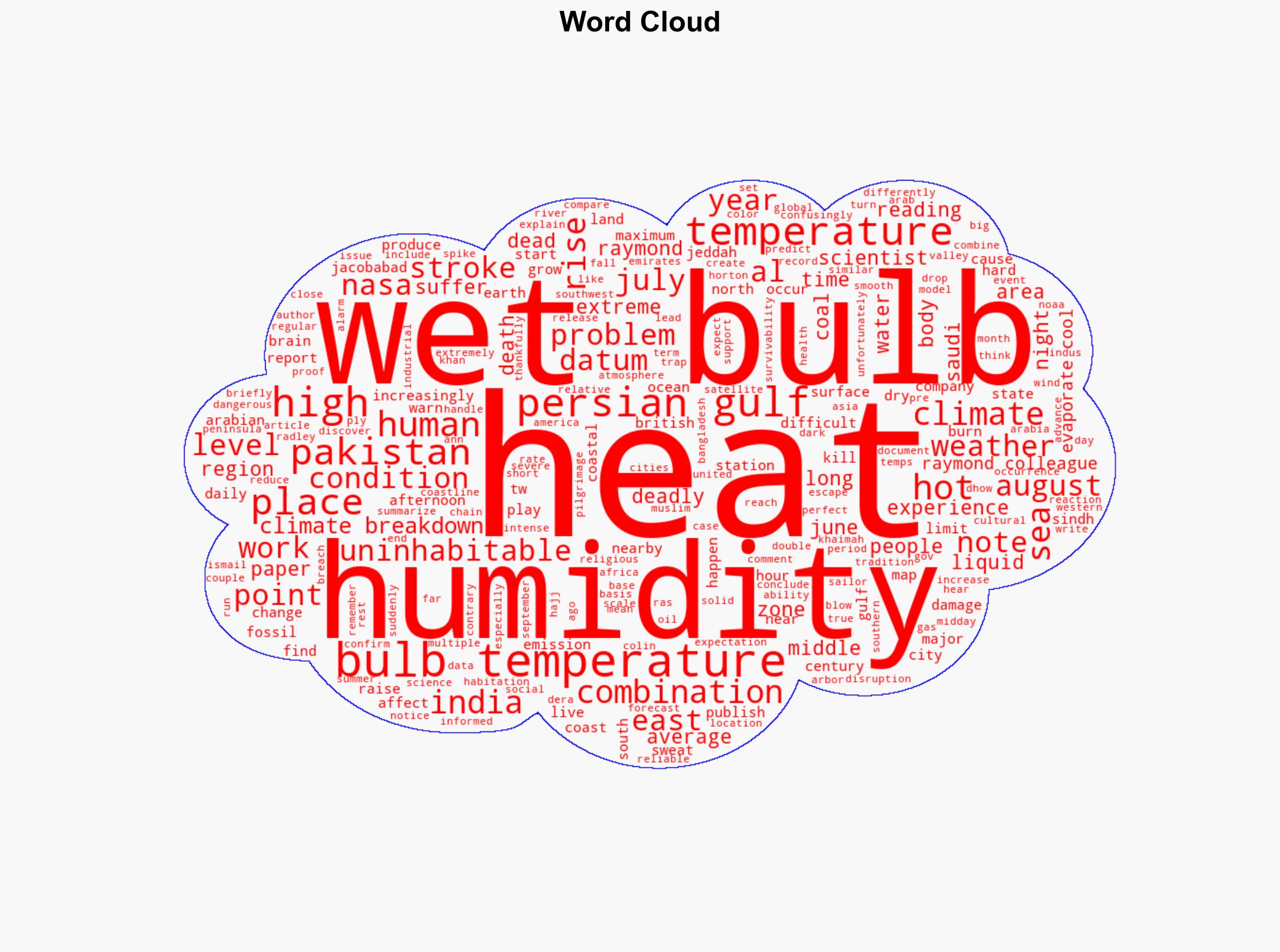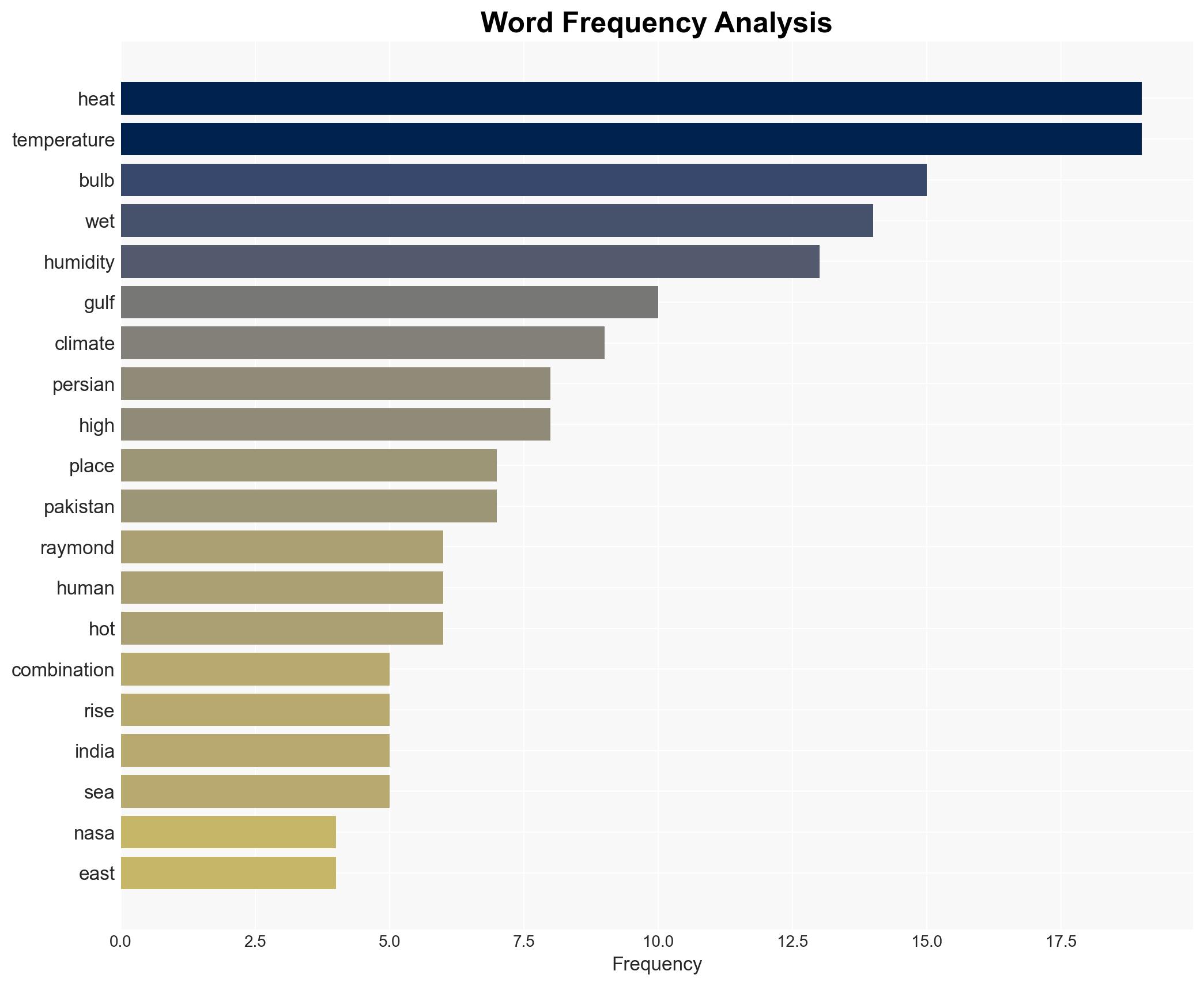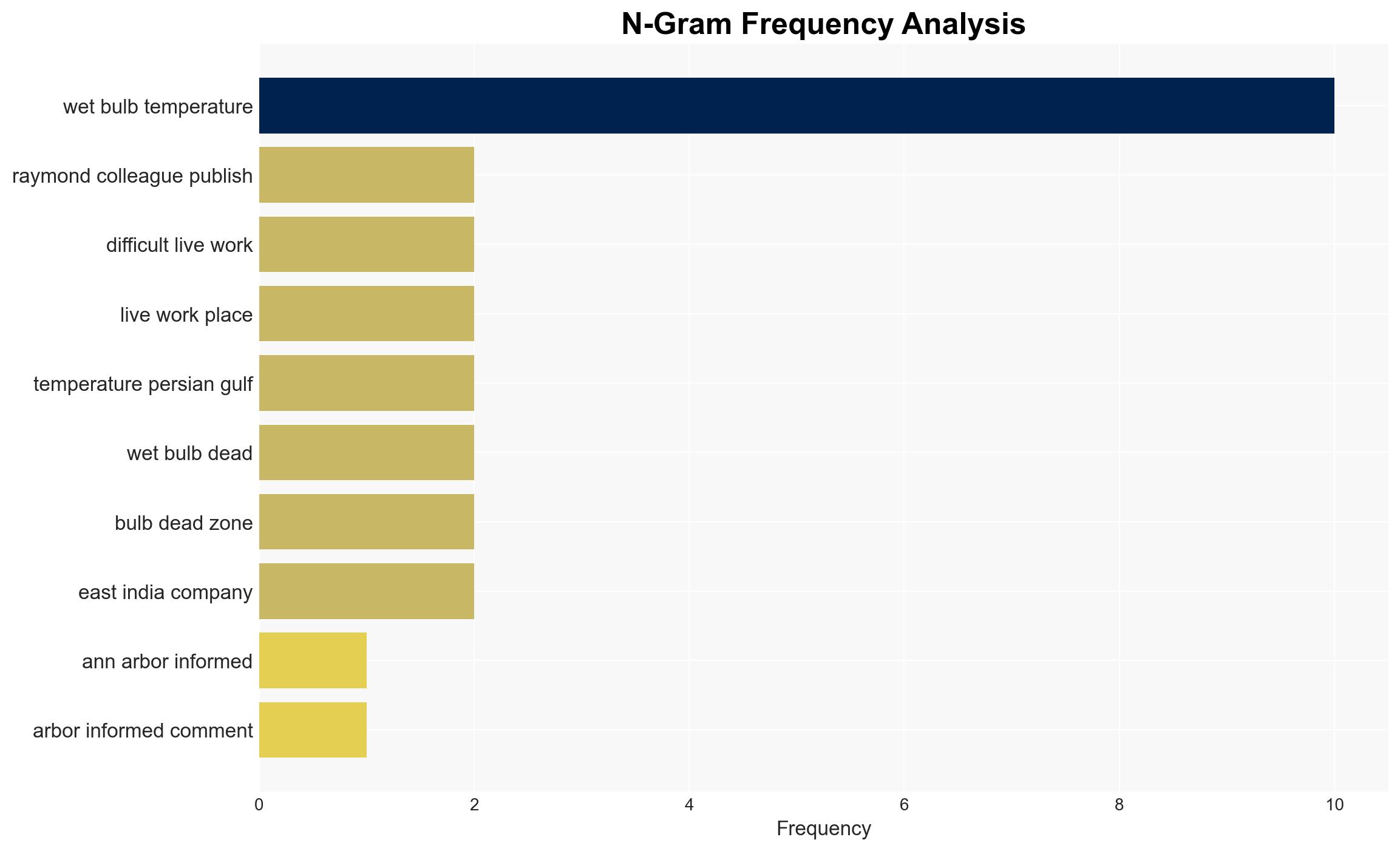Wet Bulb Dead Zones could make Parts of Middle East Pakistan Uninhabitable Even at Night – Juancole.com
Published on: 2025-04-09
Intelligence Report: Wet Bulb Dead Zones could make Parts of Middle East Pakistan Uninhabitable Even at Night – Juancole.com
1. BLUF (Bottom Line Up Front)
Recent studies indicate that parts of the Middle East and Pakistan may become uninhabitable due to extreme wet bulb temperatures, which combine high heat and humidity levels. These conditions are exacerbated by climate change, with the region experiencing temperature increases at double the global average rate. Immediate action is required to mitigate the potential humanitarian and socio-economic impacts.
2. Detailed Analysis
The following structured analytic techniques have been applied for this analysis:
General Analysis
The research by Colin Raymond and colleagues highlights the occurrence of deadly heat and humidity combinations, particularly during nighttime in the Persian Gulf and surrounding regions. This phenomenon challenges previous assumptions that nighttime temperatures would provide relief. The study identifies specific locations such as the Arabian Sea coast and cities like Jacobabad and Ras Al Khaimah, where wet bulb temperatures have reached life-threatening levels. The implications for human health, labor productivity, and cultural practices, such as the Hajj pilgrimage, are significant.
3. Implications and Strategic Risks
The increasing frequency of extreme wet bulb temperatures poses several risks:
- National Security: Potential for mass migration and displacement due to uninhabitable conditions.
- Regional Stability: Strain on resources and infrastructure, leading to potential conflicts.
- Economic Interests: Reduced labor productivity and economic output in affected regions.
4. Recommendations and Outlook
Recommendations:
- Implement climate adaptation strategies, including infrastructure improvements and urban planning to mitigate heat impacts.
- Enhance regional cooperation for climate resilience and resource management.
- Invest in technological advancements for early warning systems and heat mitigation technologies.
Outlook:
Best-case scenario: Successful implementation of adaptation measures reduces human and economic impacts.
Worst-case scenario: Failure to address climate challenges leads to widespread displacement and regional instability.
Most likely outcome: Gradual adaptation with intermittent disruptions and challenges in highly affected areas.
5. Key Individuals and Entities
The report mentions Colin Raymond and his colleagues as key contributors to the research on wet bulb temperatures. Their findings are critical in understanding the potential impacts of climate change in the Middle East and Pakistan.




